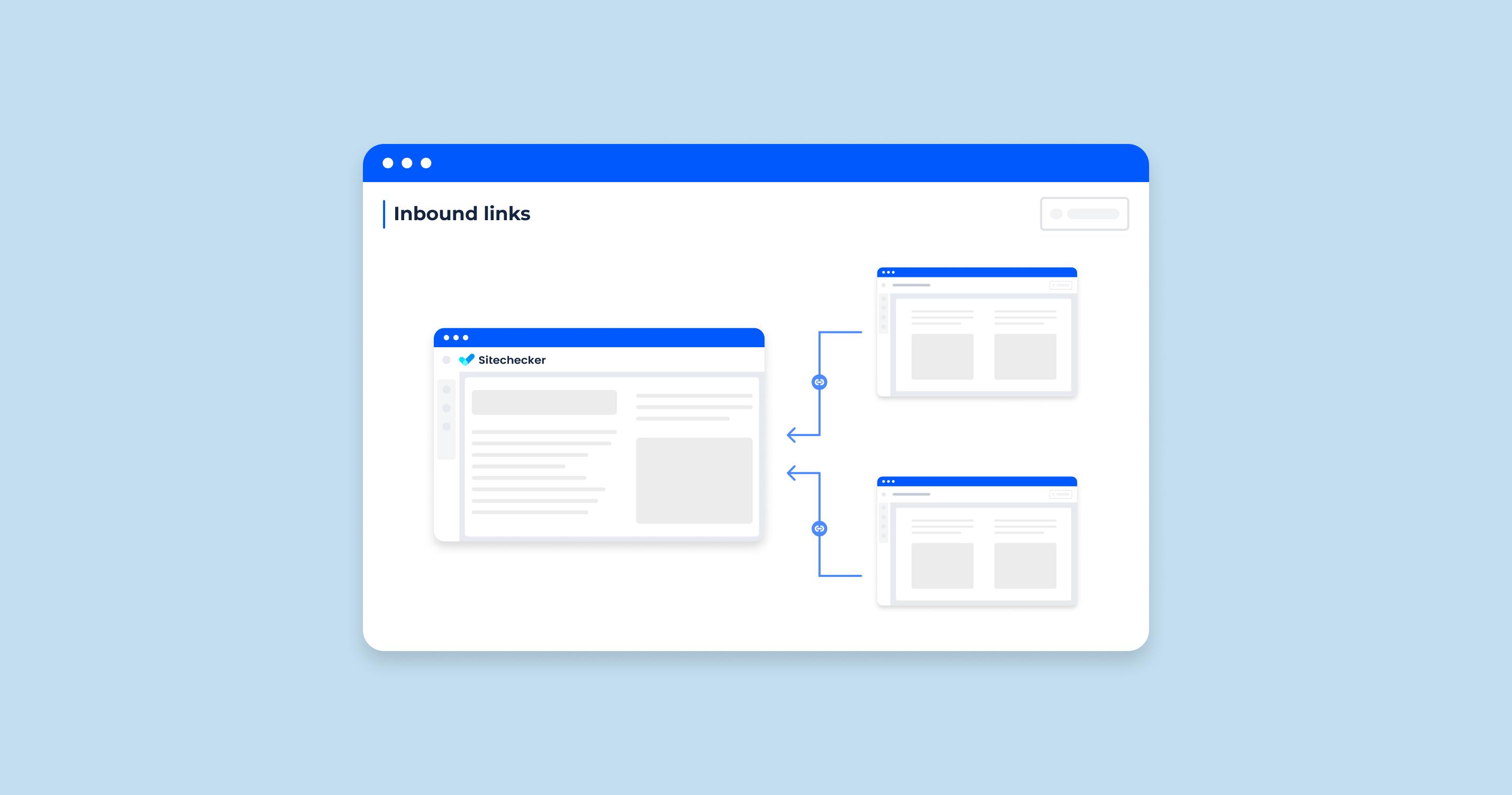What is Content Syndication?
Content syndication is a digital marketing strategy in which content that originally appears on one website is republished on other websites with appropriate permissions and attribution. In simpler terms, think of it as getting your texts a second, third, or even multiple airings on different online platforms, thus reaching a broader audience without creating entirely new materials.
To ensure consistency and monitor any changes across syndicated content, incorporating Content Monitoring can be invaluable. This allows users to track where and how their content is being republished, ensuring proper attribution and alignment with their SEO strategy. The tool also helps maintain the authenticity of syndicated materials, ensuring that content remains original and impactful across various platforms.
The concept is akin to how television shows might be broadcast on one channel and later syndicated to be aired on other stations. In the online realm, the syndicated information can take various forms: blog posts, articles, infographics, videos, and more.
There are a few primary reasons why content creators and marketers are keen on syndication:
- Extended Reach: By getting your publications featured on other platforms, you can reach audiences that you might not have accessed through your original publishing channels.
- SEO Benefits: Properly syndicated content can drive backlinks to your original pieces, potentially bolstering its search engine ranking.
- Resource Efficiency: Instead of constantly creating new materials, syndication allows brands and content creators to maximize the value they get from their existing content.
However, it’s crucial to syndicate content correctly. Improper syndication to other sites can lead to duplicate content issues, potentially harming your website’s search engine ranking. Therefore, it’s essential to work with reputable syndication partners and understand best practices, like using the “rel=canonical” tag, to signal to search engines where the original text resides.
In essence, when executed with precision, content syndication is a powerful tool for amplifying your content’s reach and influence in the digital space.
How is Content Syndication Different From Guest Posting?
Content syndication and guest posting are both valuable strategies in the world of content marketing, but they serve different purposes and have distinct characteristics. Here’s a detailed comparison to distinguish the two:
| Definition | Content Syndication: This involves taking posts that have already been published on one website (usually your own) and republishing it, either in full or summarized, on another site with permission and proper attribution. Guest Posting: This involves writing and publishing original content specifically for another website. These texts have not been previously published elsewhere and are exclusive to the host website. |
| Purpose | Content Syndication: The primary goal is to extend the reach of existing content to a broader audience without creating new materials. Guest Posting: The main objective is to reach a new audience, establish authority in your niche, and often to build backlinks to your website. |
| SEO Implications | Content Syndication: If not done correctly, syndication can raise concerns about duplicate publications, potentially affecting search rankings. However, with proper precautions (like using the “rel=canonical” tag), you can signal to search engines the location of the original content. Guest Posting: This typically provides an opportunity to earn backlinks from reputable sites, which can boost your domain authority and search rankings. |
| Content Ownership | Content Syndication: The content remains owned by the original author or website, even when republished elsewhere. Guest Posting: Once submitted and accepted, the guest post often becomes the property of the host website, though the authorship is attributed to the guest writer. |
| Frequency and Volume | Content Syndication: Since the content is already created, multiple pieces can be syndicated in a short span, depending on partnerships and agreements. Guest Posting: Given the need to create unique text for each post, the frequency and volume might be lower compared to syndication. |
In summary, while both types of content syndication and guest posting are about leveraging external platforms to amplify content reach, they differ in their approach, objectives, and implications. Syndication focuses on repurposing existing pieces, while guest posting emphasizes creating fresh, unique content for another platform. Both can be instrumental in a holistic content marketing strategy, provided they are employed thoughtfully and ethically.
Why Syndicate Content?
Content syndication offers multiple benefits to content creators, marketers, and brands looking to expand their online presence and influence. Here are the main reasons why one might consider content syndication:
| Broader Reach | Syndicating content allows it to be displayed on multiple platforms, reaching audiences that might not have been accessible through the original publishing channels. |
| Drive Traffic | By reaching new audiences, you can drive additional traffic back to your original site, especially if the syndicated publications include links or clear attributions to your website. |
| Enhance Brand Authority | Appearing on reputable platforms can boost your brand’s authority and recognition in your industry or niche. |
| SEO Benefits | Properly syndicated article can result in backlinks to your original content, which can enhance its search engine ranking. |
| Resource Efficiency | Instead of constantly producing new texts, syndication maximizes the value derived from already created content by getting it in front of more eyes. |
| Lead Generation | For businesses, syndicated content can act as a lead magnet, drawing potential clients or customers to explore their services or products in more depth. |
| Monetization | Some content creators can strike deals where they receive payment or other forms of compensation for their syndicated publications, depending on its value and demand. |
Google About Content Syndication
John Mueller, a Webmaster Trends Analyst at Google, has said on Twitter that syndicating or republishing articles sometimes makes sense, but it never makes sense if you want to rank for the queries that those pieces of content aim to rank for.
This is because Google prioritizes original texts when ranking websites, and syndicated materials are seen as being less original. If you syndicate your content, you are also essentially giving away your chance to rank for those keywords to other websites.
If you do decide to syndicate your content, there are a few things you can do to minimize the negative impact on your ranking:
- Make sure to use a canonical tag to tell Google which version of the content is the original.
- Add a nofollow tag to the link to the syndicated content.
- Make sure that the syndicated content is not published on a website that is known for low-quality content.
However, it is generally best to avoid syndicating your content if possible. Instead, focus on creating original materials that are high-quality and informative. This will give you the best chance of ranking well in Google search results.
How is Syndication Different from Plagiarism?
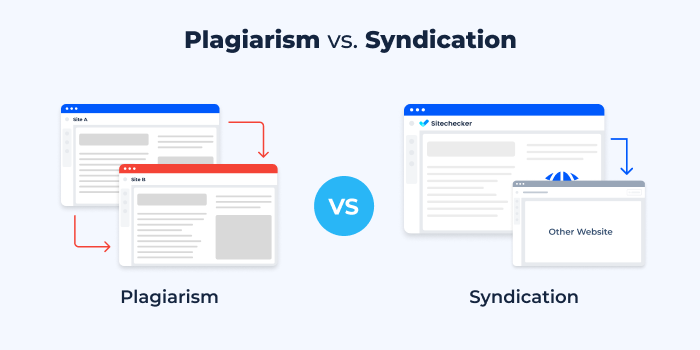
This is a crucial distinction to understand, as the two concepts are often confused, yet they stand worlds apart in terms of ethical and professional practice.
- Permission and Agreement:
- Syndication: Content is syndicated based on a mutual agreement or permission between the original creator and the platform that wants to republish it. Both parties are aware, and the terms are clear.
- Plagiarism: Plagiarism involves taking someone else’s work without permission and often without attribution, presenting it as one’s own. It’s a breach of ethics and can have legal consequences.
- Attribution:
- Syndication: Syndicated content will typically carry an attribution to the original source or author, signaling to readers where the article originated.
- Plagiarism: Plagiarized content lacks proper attribution, misleading readers into believing the content is original to the platform they’re reading it on.
- SEO Implications:
- Syndication: When done correctly, with tools like the “rel=canonical” tag, search engines are informed about the original source of the content.
- Plagiarism: Plagiarized content can harm the search rankings of both the plagiarizing site and potentially the original site if search engines can’t determine which is the original source.
- Intention:
- Syndication: The intention is to amplify the reach of content with full acknowledgment of its origins.
- Plagiarism: The intention is deceptive, aiming to benefit from someone else’s efforts without giving due credit.
In essence, while syndication is a collaborative and transparent effort to share content more widely, plagiarism is a deceitful act that violates intellectual property rights and ethical standards. Proper content syndication respects and acknowledges the original creator, while plagiarism seeks to obscure and mislead.
Benefits of Content Syndication
Content syndication is a strategy used by many brands, businesses, and individual content creators to leverage their existing texts for enhanced visibility and engagement. Let’s delve deeper into some of the key benefits of content syndication:
1. Content Exposure
- Extended Audience Reach: By syndicating your content on various platforms, you tap into their user bases, which could be distinct from your original audience. This diversification means your message reaches a broader and more varied demographic.
- Enhanced Brand Visibility: Consistent appearances on multiple platforms can cement your brand’s presence in the minds of consumers. Over time, this increased visibility can establish your brand as a trusted source of information or entertainment.
- Leveraging Authority of Established Platforms: Being featured on reputed platforms can rub off some of their authority onto your content. Readers are more likely to trust content on a platform they already trust.
- Longer Content Lifespan: While content on your platform might lose traction after a while, syndicating it gives it a new lease of life. Different platforms might feature it at different times, ensuring continuous attention.
2. Lead Generation
- Driving Traffic Back: When syndicated content captures the interest of readers, they’re more likely to click through to your site to explore more. This can result in increased website traffic.
- Nurturing Potential Customers: For businesses, quality content can act as a lead magnet. When readers find value in your syndicated content, they might be intrigued to explore your products or services, thus entering your sales funnel.
- Building an Email List: If your syndicated content directs users to landing pages with email sign-up prompts or other lead magnets, you can grow your email list, allowing for more personalized marketing efforts.
3. Link Generation
- Natural Backlinks: Reputable platforms that syndicate your content will usually link back to the original article or your website. These natural backlinks can be beneficial for SEO.
- Enhanced Domain Authority: As more established sites link to your content, search engines view your site as more authoritative in your niche. Over time, this can improve your site’s domain authority, a factor that search engines use when determining rankings.
- Networking Opportunities: Regular syndication can lead to partnerships or collaborative opportunities with other content creators or businesses. These collaborations can further lead to link exchanges, guest posting, or joint ventures that boost your online presence.
In summary, content syndication, when executed thoughtfully and strategically, offers a host of benefits that can significantly amplify your online influence, drive targeted traffic, and bolster your SEO efforts.
Downsides of Content Syndication
While content syndication offers a myriad of benefits, it’s not without its pitfalls. It’s essential to approach syndication with caution and awareness to avoid potential drawbacks. Let’s explore some of the challenges and risks associated with content syndication:
1. Spammy Sites Can Harm Your Reputation
- Association with Low-Quality Platforms: If your content gets syndicated on spammy or low-quality sites, it can tarnish your brand’s reputation. Readers might associate your publication with the dubious quality of these platforms, affecting their perception of your brand.
- Loss of Control: Once your content is out there, you might have limited control over where it ends up. Even if initially syndicated to a reputable site, secondary syndications or unauthorized republishing can occur on less desirable platforms.
- Potential for Misrepresentation: Spammy sites might modify your information or present it out of context, leading to misinformation or misrepresentation of your brand’s message.
2. Lead Generation Might Not Meet Expectations
- Diluted Traffic: Instead of directing traffic to your primary site, readers might remain on the syndicating platform, especially if the full content is available there. This can reduce the number of visitors to your original site.
- Misaligned Audiences: The audience on syndicated platforms might not always align with your target demographic, leading to lower engagement or conversion rates.
- Overdependence on Syndication: Over-reliance on syndication for lead generation can make you less focused on optimizing your primary site for conversions, potentially leading to missed opportunities.
3. Syndicated Content and Its Impact on SEO
- Duplicate Content Concerns: If search engines can’t determine which version of the content is the original, there’s a potential for ranking dilution. Both the original and syndicated versions might compete for rankings, potentially leading to neither ranking as well as they could.
- Loss of Organic Traffic: If the syndicated version outranks the original, it could siphon off organic traffic that would have otherwise gone to your primary site.
- SEO Best Practices Ignored: Not all syndicating platforms might be aware of or adhere to SEO best practices like using the “rel=canonical” tag. This can further compound the duplicate information issue and harm the original content’s search engine ranking.
In conclusion, while content syndication can be a powerful tool in a content marketer’s arsenal, it’s crucial to be aware of potential downsides. By choosing reputable syndication partners, setting clear terms, and monitoring where and how your write-ups are republished, you can mitigate many of these risks.
How to Successfully Syndicate Content
Content syndication can be a strategic boon for any content creator or marketer when done right. However, the success of syndication hinges on a methodical and informed approach. Here’s a step-by-step guide on how to successfully syndicate content:
1. Create Link-Worthy Content
- High-Quality: Ensure your content is well-researched, insightful, and offers value to readers. Quality is paramount; if your text isn’t compelling, platforms might not be interested in syndicating it.
- Originality: Your content should offer a fresh perspective, unique insights, or innovative ideas. Article that’s too generic or repetitive is less likely to be picked up for syndication.
- Visually Engaging: Use images, infographics, and other visual aids to make your publication more appealing and shareable.
2. Reach Out to the Right Platforms
- Research Potential Partners: Look for platforms that cater to your target audience and share your niche or industry focus.
- Evaluate Platform Reputation: Ensure that potential syndication partners are reputable and have a good standing in the online community.
- Initiate Contact: Craft a personalized pitch highlighting the benefits of syndicating your content. Be clear about terms and conditions.
3. Use Appropriate Methodologies for Content Syndication
- Rel=canonical Tag: This tag signals search engines about the original version of the content. By using it, you can ensure that search engines give credit to the original source, even when the content appears on multiple sites.
- Meta Noindex Tag: This tag instructs search engines not to index a particular page. When used on syndicated content, it ensures that the syndicated version doesn’t compete with the original in search engine rankings.
- Regular Backlink: Ensure that the syndicated content includes a backlink to the original post or your main website. This can drive referral traffic and boost SEO.
4. Track Your Content’s Performance
- Use Analytics Tools: Monitor how your syndicated content is performing in terms of views, engagement, and referrals using tools like Google Analytics.
- Monitor SEO Impact: Regularly check if syndication is affecting your search rankings. Tools like Moz or Ahrefs can help track backlinks and domain authority.
- Feedback Loop: Engage with syndication partners to gather feedback on how the content is received by their audience.
5. Evaluate and Improve
- Review Outcomes: Periodically assess the benefits you’re gaining from syndication against the effort and any potential downsides.
- Iterate: Based on your assessments, refine your content strategy, make necessary changes, and continuously aim for improvement.
- Maintain Relationships: Building and maintaining strong relationships with syndication partners can lead to more opportunities in the future. Ensure clear communication and mutual respect.
In summary, the key to successful content syndication lies in a balance of quality content creation, strategic partnerships, diligent monitoring, and continuous refinement.
Free Content Syndication
Free content syndication refers to the practice of allowing other websites, platforms, or media outlets to republish or reuse your publication without any monetary exchange. It’s a strategic move to increase the visibility and reach of your text. But, like all strategies, it has its pros and cons. Here’s a deep dive into free content syndication:
Benefits:
- Increased Visibility: By allowing other platforms to use your content freely, you can tap into their user base and expand your reach.
- SEO Advantages: With proper attribution and backlinks, syndicating content can provide valuable backlinks to your site, potentially boosting your search engine ranking.
- Authority Building: Appearing on multiple platforms can establish you as an expert in your field or niche.
- Cost-Effective: Free syndication can provide many of the benefits of paid syndication without any of the costs.
How to Implement:
- Choose the Right Platforms: Do thorough research to find platforms that cater to your target audience and resonate with your brand values.
- Set Clear Terms: Even if you’re not charging for your content, have clear terms and conditions in place regarding attribution, link-backs, and any modifications.
- Use Syndication Platforms: There are several platforms and networks, like Medium or LinkedIn Pulse, where you can syndicate your content for free, exposing it to a wider audience.
- Stay Updated: Ensure that the syndicated content remains updated. If the original content changes, communicate this to platforms that have syndicated the publication.
Drawbacks and Precautions:
- Potential for Overexposure: If your content appears everywhere, it might lose its uniqueness and appeal.
- Risk of Inadequate Attribution: Some platforms might not credit you properly or might bury the backlink, reducing the potential SEO benefits.
- Possible SEO Complications: If syndicating sites don’t use the right tags (like rel=canonical), there’s a risk of diluting your content’s search ranking.
- Quality Control: There’s a possibility that the platform might not maintain the quality of your content presentation, leading to inconsistent user experience.
How to Find Content Syndication Partners
Content Syndication Services, Sites, & Networks
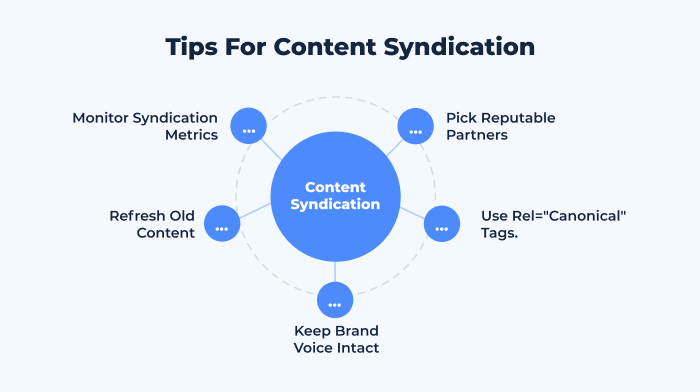
Content syndication services, sites, and networks offer platforms for content creators to distribute their work to a wider audience. These entities provide the infrastructure and audience base to help amplify your content’s reach. Here’s an overview of the landscape:
Types of Syndication Platforms:
- Dedicated Syndication Services: These are specialized services that focus solely on content syndication. They often have partnerships with multiple publishers and can distribute your content across a range of platforms.
- Social Media Platforms: Sites like LinkedIn Pulse or Medium allow users to republish their existing content, reaching a potentially larger audience than their personal or company blogs.
- Content Discovery Networks: Platforms like Taboola or Outbrain promote your content as “recommended reading” on other websites, increasing its visibility.
- Industry-Specific Networks: Certain networks cater to niche industries or topics, ensuring that your content reaches an audience specifically interested in your subject matter.
Benefits:
- Extended Reach: By leveraging these networks, you can tap into a pre-existing audience, thereby increasing the visibility of your content.
- Tailored Audience: Some platforms allow you to target specific demographics or interest groups, ensuring that your content reaches those most likely to engage with it.
- SEO Benefits: Syndication can lead to increased backlinks and referral traffic, boosting your site’s SEO.
Things to Consider When Choosing a Platform:
- Relevance: Ensure the platform or service caters to your target audience or industry.
- Reputation: Research potential syndication platforms to ensure they’re reputable and won’t harm your brand’s image.
- Cost: While many platforms offer free syndication, others might charge. Assess the potential ROI before investing.
- Control: Check how much control you retain over your content. Can you dictate where it’s placed, how it’s displayed, or when it’s taken down?
- Analytics: Opt for platforms that provide detailed analytics, so you can track how your syndicated content is performing.
Best Practices:
- Quality Over Quantity: Instead of syndicating everywhere, choose platforms that align with your brand and audience.
- Regular Monitoring: Keep track of where your content is appearing and how it’s performing.
- Engage with Your Audience: If readers are commenting or engaging with your content on syndication platforms, take the time to interact with them.
- Stay Updated: The world of content syndication is always evolving. Keep an eye on industry trends, emerging platforms, and best practices.
Paid Content Syndication
Paid content syndication is the practice of paying platforms, websites, or services to distribute or republish your publication to expand its reach and visibility. Unlike free content syndication, where the focus is often on mutual benefits from shared materials, paid syndication is more commercial and targets a much broader audience. Here’s what you need to know:
Why Opt for Paid Syndication?
- Guaranteed Visibility: Paying ensures your content gets prime spots, often leading to more clicks and views.
- Targeted Audience: Many paid services allow for audience segmentation and targeting, ensuring your content reaches the right demographic.
- Professional Handling: Paid services often come with additional features like optimization, reporting, and even customization for different platforms.
Popular Platforms for Paid Syndication:
- Content Discovery Networks: Platforms like Outbrain, Taboola, and Revcontent place your content in high-visibility areas on popular websites as “suggested” or “recommended” content.
- Social Media Advertising: Networks like Facebook, LinkedIn, and Twitter allow for promoted posts or ads that can amplify your content reach.
- Native Advertising Platforms: These integrate your content seamlessly into the host website, making it appear as if it’s part of the site’s natural content.
Cost Structure:
- Pay-Per-Click (PPC): You pay each time someone clicks on your syndicated content.
- Fixed Fee: A one-time or recurring fee for distributing your content.
- Cost Per Mille (CPM): A fee for every 1,000 impressions or views of your content.
Benefits:
- Immediate Traffic Boost: Paid syndication can quickly drive a large volume of traffic to your content.
- Enhanced Brand Awareness: Your content, and by extension, your brand, gains increased visibility.
- Flexibility: Many platforms offer flexibility in terms of campaign duration, budget, and targeting options.
Drawbacks:
- Costs Can Add Up: Without careful management, costs can escalate, especially in a competitive niche.
- Quality of Traffic: The traffic might be vast in numbers, but not always in quality. There’s no guarantee of conversion or meaningful engagement.
- Oversaturation: Over-reliance on paid syndication can make your brand appear too promotional or spammy.
Best Practices:
- Set Clear Goals: Understand what you aim to achieve, be it brand awareness, lead generation, or direct conversions.
- Monitor and Optimize: Regularly assess campaign performance and adjust strategies for better ROI.
- Quality First: Ensure your content is of high quality; otherwise, no amount of paid promotion will yield sustainable results.
- Diversify: Don’t put all your money into one platform. Test different platforms and see which ones give the best results for your content and audience.
Top Content Syndication Platforms
The content syndication landscape is vast, and the best platform for your needs may vary based on your goals, industry, target audience, and budget. Here’s a list of some of the top content syndication platforms that cater to diverse needs:
1.Outbrain

- Overview: Outbrain is one of the leading content discovery platforms. It places your content as recommended reading on major news websites and blogs.
- Best For: Brands looking for high visibility across varied audiences.
- Key Features: Advanced targeting options, pay-per-click model, extensive analytics.
2.Taboola

- Overview: Similar to Outbrain, Taboola suggests your content on some of the most popular sites on the internet.
- Best For: Wide reach across diverse sectors and demographics.
- Key Features: Audience targeting, campaign optimization, detailed reporting.
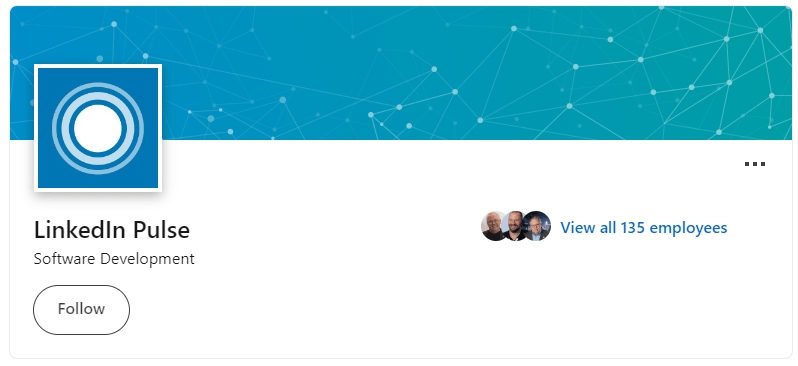
- Overview: LinkedIn Pulse allows professionals and brands to publish articles directly to LinkedIn, leveraging the platform’s vast professional network.
- Best For: B2B content and thought leadership articles.
- Key Features: Direct access to LinkedIn’s audience, native integration with profiles, engagement metrics.
4.Medium

- Overview: Medium is a popular online publishing platform where individuals and brands can post articles.
- Best For: Thought leaders, writers, and brands looking for a platform with a built-in audience.
- Key Features: Elegant writing environment, curation opportunities, monetization through the Medium Partner Program.
5.Zemanta
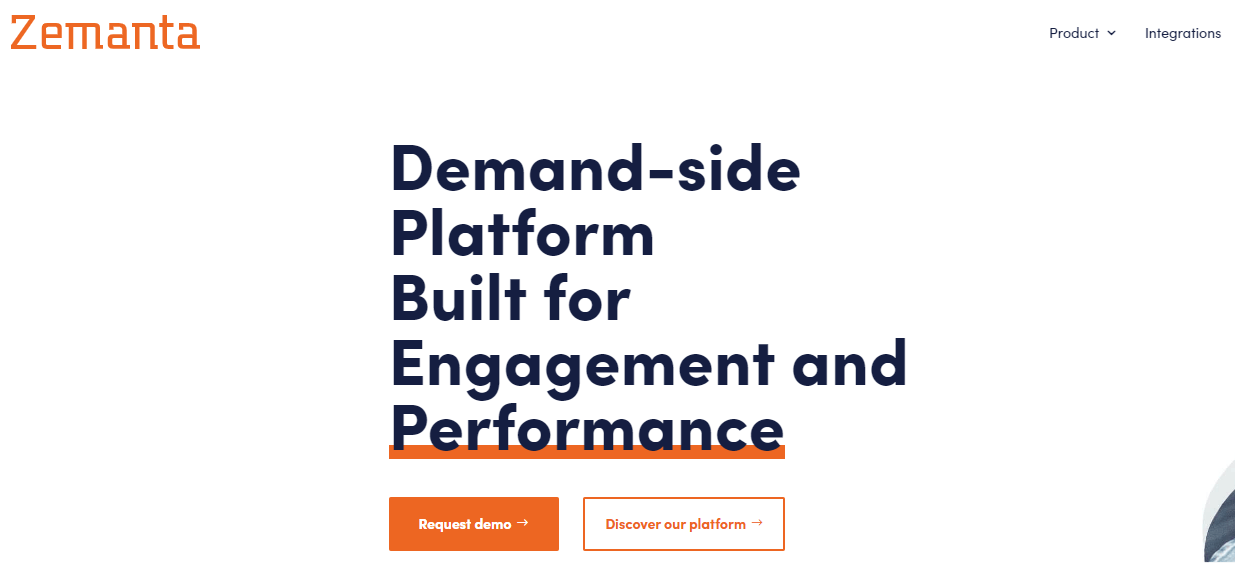
- Overview: Zemanta offers content and native advertising on a range of relevant blogs and news sites.
- Best For: Targeted content promotion to niche audiences.
- Key Features: Real-time bidding, multi-platform support, extensive analytics.
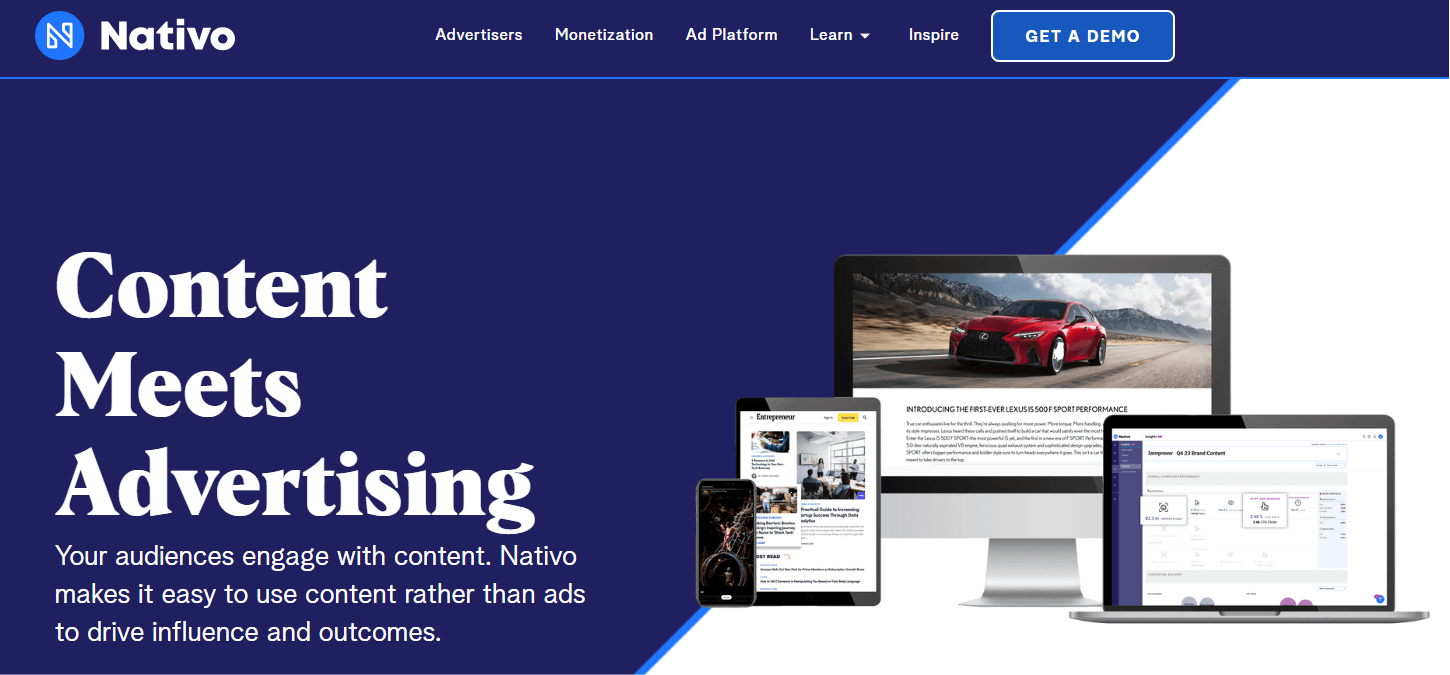
- Overview: SimpleReach uses real-time data to predict the potential success of content and distributes it to the most promising platforms.
- Best For: Data-driven content promotion and distribution.
- Key Features: Predictive analytics, cross-platform reach, performance tracking.

- Overview: Revcontent is a content discovery network known for its high-quality native ads and strict selection criteria.
- Best For: Brands aiming for premium placements and audiences.
- Key Features: High-quality publisher network, granular targeting, customizable widgets.

- Overview: Quuu Promote integrates with social media scheduling tools to promote your content across a wide range of social channels.
- Best For: Social media-based content promotion.
- Key Features: Integration with major social platforms, broad category selection, manual review process.
Selecting the right content syndication platform requires a deep understanding of your audience, content goals, and budget. It’s often worthwhile to test multiple platforms with smaller campaigns to gauge the ROI and fit for your content strategy. Each platform offers unique advantages, so aligning your choice with your content objectives will ensure the best results.
Paid Platforms
Paid platforms for content syndication require financial investment to distribute your content, often guaranteeing better visibility and reach in exchange for the associated costs. These platforms primarily operate through a variety of monetization models such as pay-per-click, fixed fee, or cost per mille (CPM).
Examples:
- Outbrain & Taboola: These are content discovery networks that place your articles, blogs, or videos on major news sites as “recommended” or “related” content. They operate mainly on a pay-per-click model.
- Zemanta: This platform offers content promotion across a range of blogs and news sites using real-time bidding.
- Revcontent: A more selective content discovery network known for its high-quality native ads.
- Social Media Advertising: Platforms such as Facebook Ads, LinkedIn Sponsored Content, or Twitter Promoted Tweets allow for targeted promotion of your content pieces to specific demographics or interest groups.
- Native Advertising Platforms: Sites like Sharethrough or Nativo offer native advertising solutions, embedding your content seamlessly into other websites.
Benefits:
- Guaranteed visibility and reach.
- Advanced targeting capabilities to ensure the content reaches the desired audience.
- Professional analytics and optimization tools for campaigns.
Owned Platforms
Owned platforms are those channels or assets that a brand or individual has complete control over. They do not require external permissions for content distribution or syndication.
Examples:
- Company Websites/Blogs: This is the primary hub where brands publish and syndicate their content.
- Email Newsletters: A direct channel to your subscribers, email newsletters can be used to syndicate new content pieces, updates, or curated content.
- Mobile Apps: If a brand has a mobile app, it can be an excellent platform to push content to engaged users.
- Social Media Profiles: While not completely ‘owned’ in the strictest sense (since they’re hosted by third parties), profiles on platforms like LinkedIn, Twitter, or Facebook are controlled by the brand, and can be used to share and syndicate content regularly.
- RSS Feeds: Brands can use RSS feeds to push content updates to subscribers and other websites.
Benefits:
- Complete control over content presentation, distribution, and analytics.
- Direct relationship and engagement with the audience without intermediaries.
- Cost-effective in the long run, as there’s no need for continuous financial investment per content piece.
While both paid and owned platforms have their advantages, a balanced content syndication strategy often involves leveraging both. Paid platforms offer quick, targeted reach, especially beneficial for new content pieces or promotions. In contrast, owned platforms build and nurture a loyal audience over time, providing consistent engagement and feedback.
Duplicate Content Checker to Find Internal Duplicate Materials
The Duplicate Content Checker by Sitechecker is an essential tool for anyone keen on maintaining the integrity and uniqueness of their website content. With a user-friendly interface, it effortlessly scans web pages to identify any instances of copied or repeated content, helping you ensure your site’s content remains fresh and free from potential SEO penalties.
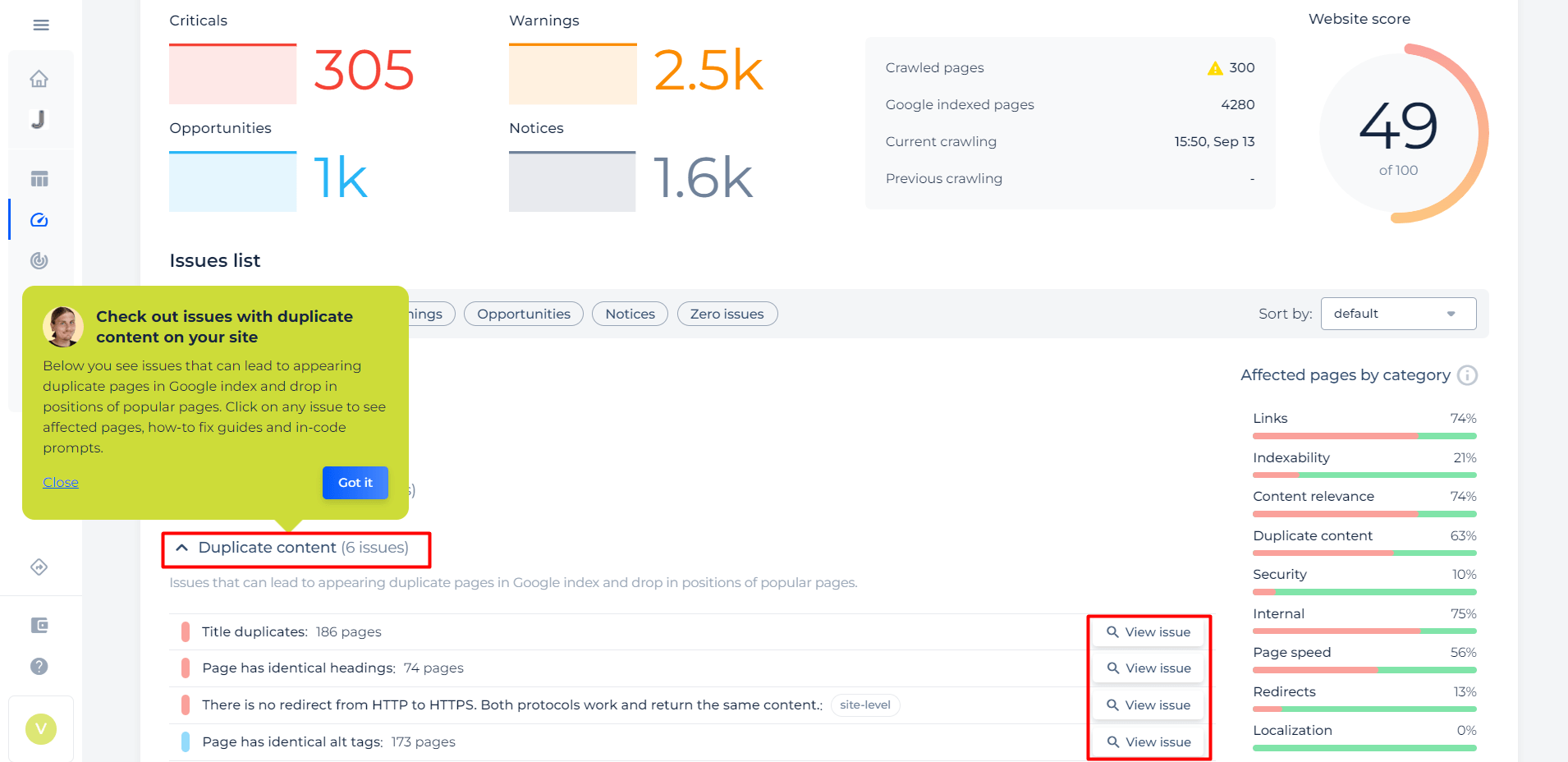
Beyond its primary function of detecting duplicate content, the tool is equipped with additional features that enhance its utility. It not only indicates the percentage of duplicated content but also pinpoints the specific sections that are replicated. Such detailed insights are invaluable for content creators and SEO professionals aiming for a pristine and optimized web presence.
Spot, Check & Correct Duplicates!
Use our Duplicate Content Checker to identify and resolve content overlaps swiftly.
Conclusion
Content syndication is a dynamic and invaluable tool in the arsenal of digital marketers and content creators. Through it, brands can amplify their reach, engage new audiences, and reinforce their message across multiple platforms. While paid syndication platforms provide a rapid, targeted boost to content visibility, owned platforms cultivate a more organic, long-term relationship with audiences. Selecting the right blend of these platforms, coupled with high-quality content, can significantly bolster a brand’s digital presence and impact. As with all strategies, regular evaluation and adaptation are key, ensuring that the content remains relevant, engaging, and aligned with the brand’s objectives.






